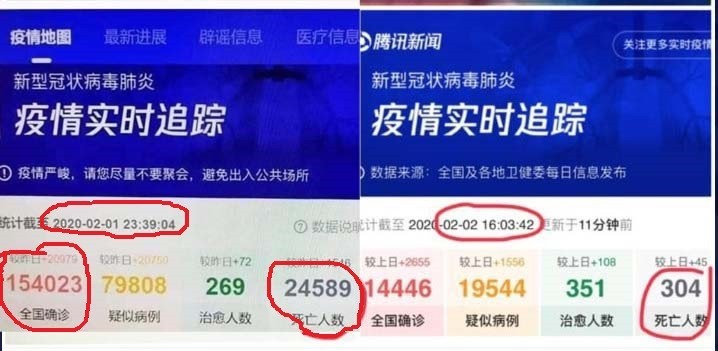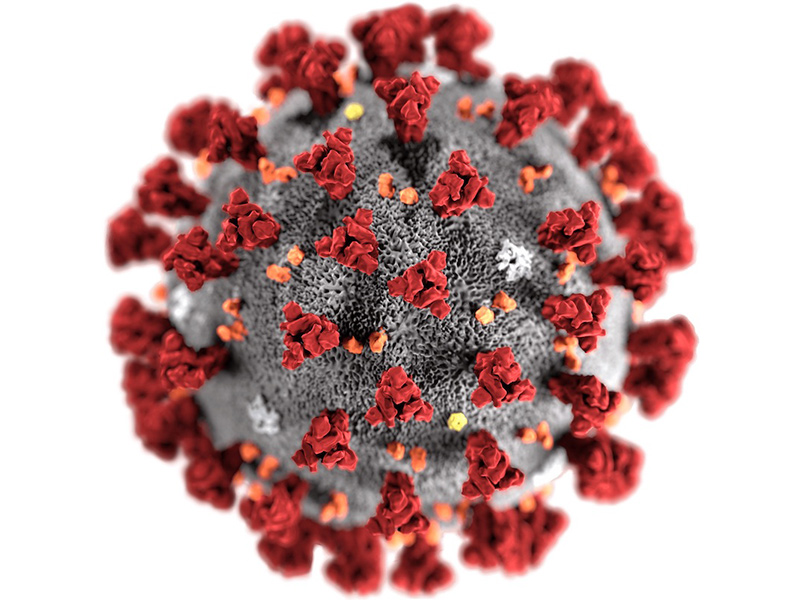After following global health issues for 15 years, I’m used to a sudden burst of information about each new disease outbreak — SARS, H5N1, H1N1, cholera, MERS, Ebola. But I’ve never seen such a geyser of information as that generated by the current novel coronavirus (2019nCoV) in China.
Most of that information is solid, something to build on for future research and preparation. But some of it is dangerously fake news, created by cynical opportunists eager to push their agenda regardless of the harm they do to global health and the people it tries to care for.
A couple of days ago, searching for coronavirus news, I found a story claiming that China’s coronavirus death toll as of Feb. 1 was somewhere around 25,000, out of 150,000 cases. The official figures at that point were 304 deaths out of 14,380 cases. The story was on a site called CCN.com, reporting mostly on digital currencies and sports with a dash of regular news. (CCN stories have appeared on the main page of the Google News aggregator, which says something about the credibility of either CCN or Google’s algorithms, as we shall see.)
CCN based its report on one in the English-language newspaper Taiwan News. The Taiwanese story said that daily coronavirus updates on the Chinese social media site Tencent had several times posted high figures that suddenly disappeared, to be replaced by much lower ones. Unidentified “netizens” had not only noticed the changes but had had the presence of mind to do a screengrab of one on Feb. 1.
Well, it was exciting and scary, but the report had some very dubious assumptions. I started thinking like a disaster novelist, pitching a thriller about a pandemic breaking out, to a serious editor who can see the holes in any plot.
A story no editor would buy
My imaginary pitch ran into trouble right away: The Wuhan Health Commission may serve a huge city of 11 million, but just a month into the outbreak we’re supposed to think that it has the surveillance and testing resources to tally an average of over 5,000 cases a day, each of them confirmed by a brand-new test, run by healthcare workers trained in how to do it, while also keeping track of over 2,600 suspected cases a day. The commission would also have to keep track of an average of 800+ daily deaths.

What’s more, this was supposed to be going on while five million Wuhan residents were taking off by trains, planes, and automobiles to see their families for Lunar New Year or drum up a little business in Hong Kong, or grab a holiday in Bangkok or Singapore, or fly back to the US or Canada for their spring semester.
Yet no one, in or out of Wuhan, had breathed a word about the disaster going on at home. Not a single healthcare worker dropped even a cryptic reference on Weibo. Even Dr. Zhong Nanshan, who famously bullied the Communist Party of China into admitting the truth about SARS, talked only about the officially announced numbers.
One doctor, Li Wenliang, had seen some of the early cases in December and mentioned them to his colleagues online. The Wuhan cops threatened him into silence. He went back to work, contracted coronavirus, and died on Feb. 6. By then the local authorities had been brusquely replaced by heavy hitters from Beijing.
What’s their motivation?
“Meanwhile,” I imagined my editor saying, “what’s the government’s motivation in suppressing the real numbers?”
OK, says I, waving my arms a lot, the standard governmental fear of embarrassment, which politicians and bureaucrats alike fear more than any plague. But if the news leaks out (and it will), the government all the way up to Xi Jinping will be not embarrassed but discredited. He didn’t get to be Great Leader by ignoring obvious hazards. Besides, how could a seriously competent oppressive government actually provide the “real” numbers to its own news service?
What about the screenshot showing Tencent’s supposedly leaked numbers? Occam’s Razor demands the simplest explanation that fits the facts, which in this case is that the screenshot with the inflated numbers is a fake. The story’s writer, Keoni Everington, describes it simply as an “Internet image,” and presents no authority to confirm it — only nameless “netizens.”
I admit it would be a hell of a story if true. But first a story must be plausible, and this Taiwan News story is not. All it really tells us is that someone thinks it’s politically worthwhile to feed anti-Beijing sentiment and distrust with fake news.
Calling bullshit
Online Twitter debates about the story soon produced @goldencaskcap, a knowledgeable person who pointed out that the screenshot of the Tencent numbers used traditional Chinese ideograms — still used in Taiwan, but long since simplified in mainland China. In a later tweet, the same person pointed out that it’s easy to hack raw HTML to create any numbers you like.
CBC News has confirmed the tweeter’s point — and pointed out that the original story has gone worldwide, which was the whole point.
The Twittersphere speculated that the Russians were behind this, but it seems more likely to be Taiwanese hackers looking for a way to discredit the Beijing government and its response to the outbreak. They didn’t even bother to use mainland Chinese ideograms. Their goal wasn’t to dupe people on the mainland — it was to deceive people illiterate in Chinese, who might believe a screenshot.
Taiwan News may have been deceived as well, but it seems fond of promoting such stories; on Feb. 6 it ran a piece claiming that the coronavirus was the product of a Chinese military lab. This ties in with various vague claims that Chinese scientists swiped the virus from a Winnipeg lab, that a major laboratory is located in Wuhan, and so on.
Don’t confuse me with facts
Such fake news is intended to confuse, not to persuade. It offers little evidence, only conjectures that might appeal to people’s anxieties and suspicions. We vaguely remember the Chinese covered up SARS; aha, they’re at it again! Then the counter-arguments (like this article) come in, but the damage is done: people don’t know whom to trust or what to believe. From becoming competent agents judging information on its merits, they become passive and apathetic. Blah blah blah. They’re all crooks, all liars. Who cares?
In the last decade we’ve seen fake news successfully discredit not only persons but governmental institutions and whole nations. Fake news helped elect a fake president, and seems likely to see him re-elected. Fake news by anti-vaxxers has reduced the measles vaccination rate all over the world, causing the avoidable deaths of thousands of children, and created a health populism that will literally be the death of many more.
In the process, fake news discredits the whole institution of public health, scaring people into seeking safety with “wellness” experts and charlatans with efficient online sales systems.
An outbreak no one could handle
China would have been devastated by this virus if it had hit when SARS did in 2002-2003, but it now has a far better health system. But no system on the planet, including Canada’s, could have coped with an outbreak on this scale.
Chinese hospitals lack “surge capacity” to handle new cases, and the logistic capability to supply those hospitals with competent staff and supplies. That’s political reality; no one wants to pay for trained people idly waiting around for the next outbreak.
But the Chinese are quite prepared to take measures we would fear to do even if we could, like building 1,000-bed hospitals in under 10 days and quarantining 50 million people. (Imagine sealing off all of southern Ontario from Windsor to Toronto, while building and staffing instant hospitals, before the end of February.)
President Xi and his government clearly see this as an existential crisis. Resolving it will require a spending of political, economic, and social capital on a staggering scale, as well as help from other nations. Fake news that weakens international help could hinder the response — and let the coronavirus spread even further around the world.
Whoever cooked up that bogus story about exaggerated coronavirus numbers didn’t care how many Chinese might die as a result; they might even measure their success by the death toll. By the same token, they won’t care about Canadian deaths either.
But Canadians should. If we don’t help China fight this virus, it will soon get around to us. ![]()
Read more: Health, Coronavirus
















Tyee Commenting Guidelines
Comments that violate guidelines risk being deleted, and violations may result in a temporary or permanent user ban. Maintain the spirit of good conversation to stay in the discussion.
*Please note The Tyee is not a forum for spreading misinformation about COVID-19, denying its existence or minimizing its risk to public health.
Do:
Do not: